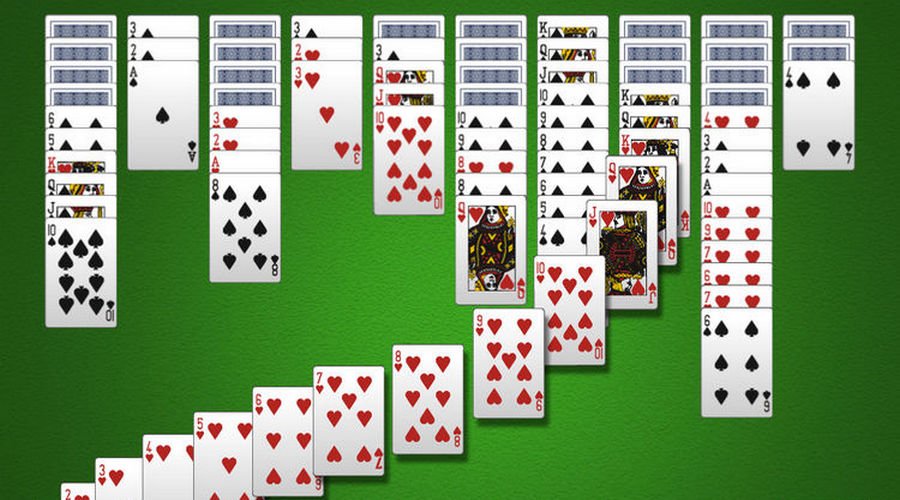Introduction
What Is An Ante In Poker: In poker, the ante is a term used to describe a mandatory bet that every player must contribute to the pot before the hand begins. It is a common feature in many poker variants and serves the purpose of creating initial action and ensuring there is something at stake in each hand.
The ante is typically a small, predetermined amount set by the game rules or the table stakes. It is different from the blinds, which are also forced bets but made only by specific players. Unlike the blinds, which rotate around the table, the ante is collected from every player at the table, regardless of their position.
The primary function of the ante is to incentivize players to participate in the hand, creating a pot that provides value and motivation for players to make strategic decisions and engage in betting and raising. By requiring every player to contribute to the pot, the ante helps facilitate more active and competitive gameplay.
Understanding the concept of the ante is essential for any poker player, as it influences the dynamics of the game and affects strategic decision-making. In this article, we will delve deeper into the significance of the ante in poker and explore its impact on gameplay.
How does ante work in poker?
An ante is a forced bet in which all players put an equal amount of money or chips into the pot before the deal begins. Often this is either a single unit (a one-value or the smallest value in play) or some other small amount; a proportion such as a half or a quarter of the minimum bet is also common.
In poker, an ante is a forced bet that every player at the table must contribute before each hand is dealt. It is distinct from the blinds, which are also forced bets but only placed by specific players in each hand.
The ante is typically a small percentage of the minimum bet or a fixed amount agreed upon by the players. It serves multiple purposes in the game:
1. Stimulating Action: Antes encourage players to participate in hands and create more action by putting chips in the pot from the start. This helps prevent overly tight or passive play.
2. Increasing Pot Size: By adding to the pot before the hand begins, the ante helps build a more substantial pot for players to compete for. This can lead to bigger bets and higher potential winnings.
3. Balancing Equity: Antes ensure that all players contribute to the pot, irrespective of their position at the table. This helps distribute the cost of playing each hand more evenly among the participants.
4. Accelerating Gameplay: With antes in play, there is more incentive for players to play hands and less incentive for extensive folding. This can speed up the pace of the game and increase the number of hands played per hour.
It’s important to note that the specific rules regarding antes may vary depending on the poker variant being played. Some games, such as Texas Hold’em and Omaha, commonly incorporate antes, while others, like Seven-Card Stud, may use antes in later betting rounds or not at all.
How much is the ante in poker?
How much is the ante in poker? The size of the ante depends entirely on the local rules of the game. In the majority of cases it will be somewhere around 10% of the size the big-blind. So a $1/$2 No Limit Hold’em cash game might have an ante somewhere around $0.20 cents.
The amount of the ante in poker can vary depending on the specific game, the stakes being played, and the rules set by the poker room or the players themselves. Typically, the ante is a small percentage of the minimum bet or a fixed amount agreed upon by the players.
In lower stakes games, the ante is usually a relatively small amount, often equal to or slightly more than the minimum bet. For example, in a $1/$2 No-Limit Texas Hold’em game, the ante might be set at $0.25 or $0.50.
In higher stakes games, the ante may increase accordingly. In professional tournaments or high-stakes cash games, the ante can be more significant, ranging from tens to hundreds of dollars.
It’s important to note that the specific amount of the ante should be clearly communicated and agreed upon by all players before the game begins. The dealer or the house may also provide guidance on the ante amount if playing in a casino or poker room.
Who wins the ante in poker?
If a player in the tournament does not have the required amount for both the Big Blind and the Ante, the Big Blind will be paid first, followed by the ante. No matter how many chips a participant starts with he/she can always win the entire ante.
In poker, the ante is a forced bet that every player must contribute to the pot before the hand begins. The specific rules regarding who wins the ante can vary depending on the poker variant being played.
In some games, the ante is simply a mandatory contribution that goes into the pot and is not awarded to any specific player. It is used to create initial action and ensure there is something at stake in each hand.
In other games, such as Seven-Card Stud, the player with the lowest-ranking upcard (the exposed card) may be required to make a bring-in bet instead of an ante. In this case, the bring-in bet goes into the pot and is not returned to the player.
It’s important to note that the ante is different from the blinds, which are also forced bets but made only by certain players at the table. The blinds are typically awarded to the players who post them if there is no further betting and they have the winning hand.
To determine the specific rules regarding the ante and its distribution in a particular poker game, it is best to refer to the specific rules and guidelines of that game or consult the house rules of the casino or cardroom where the game is being played.
What is AA and ante in poker?
Casino Hold’em games include the standard 52-card deck. You start playing by making an ante bet. It’s a forced wager you need to make before the flop. You can also make a side bet. In Casino Hold’em it’s known as AA (Bonus) bet.
In the context of poker, “AA” typically refers to the pocket pair of aces, which is the highest-ranking starting hand in Texas Hold’em and many other poker variants. The notation “AA” is a shorthand way of representing this specific hand. A pair of aces is considered extremely strong and often leads to aggressive betting or raising.
On the other hand, the term “ante” refers to a forced bet that every player must contribute to the pot before the hand begins. The ante is a predetermined amount set by the game rules or the table stakes. It is different from the blinds, which are also forced bets made by specific players.
The purpose of the ante is to create initial action and ensure there is something at stake in each hand. The amount of the ante is typically smaller than the blinds and is usually a fraction of the minimum bet or big blind. The ante is collected from each player at the table and added to the pot.
While “AA” refers to a specific poker hand, the ante is a concept related to the structure of betting in poker games. They are two distinct elements within the realm of poker.

Is poker a solved game?
Poker is a family of games that exhibit imperfect information, where players do not have full knowledge of past events. Whereas many perfect-information games have been solved (e.g., Connect Four and checkers), no nontrivial imperfect-information game played competitively by humans has previously been solved.
No, poker is not considered a solved game. Unlike games such as tic-tac-toe or checkers, where optimal strategies and outcomes can be determined through exhaustive analysis, poker involves incomplete information, randomness, and the element of human decision-making.
Poker is a game of skill and strategy that combines mathematical calculations, psychological factors, and the ability to make informed decisions based on limited information. The presence of hidden cards, variable bet sizes, bluffing, and the unpredictability of opponents make it impossible to solve poker in the same way as deterministic games.
While there have been significant advancements in poker AI and computer programs that have achieved impressive results against human players, the complexity and uncertainty inherent in the game make it challenging to completely solve. Poker continues to offer a dynamic and evolving strategic landscape, ensuring its enduring appeal and competitive nature.
What is ante vs blinds poker?
If Ante is $1, the bet amounts are not affected and are based on the blinds or the small and big bets, as per the game rules. Blinds, on the other hand, affect the size of the bet. If the small bet is $5 and the big bet is $10, then the next player has to either call and bet the same amount of $10 or raise to bet $20.
In poker, both antes and blinds are forced bets that players must contribute before each hand is dealt. While they serve a similar purpose of stimulating action and contributing to the pot, there are some differences between the two:
Ante:
- An ante is a small bet that every player at the table must contribute before each hand.
- The ante amount is typically a fixed amount or a small percentage of the minimum bet.
- The ante is placed by all players equally, regardless of their position at the table.
- The purpose of the ante is to distribute the cost of playing each hand evenly among all players and create more action.
Blinds:
- Blinds are also forced bets, but they are placed by specific players in each hand.
- In most poker games, there are two blinds: the small blind and the big blind.
- The small blind is placed by the player directly to the left of the dealer button, and the big blind is placed by the player to the left of the small blind.
- The blinds are typically larger bets compared to the ante and are set amounts based on the game’s stakes.
- The blinds help initiate the betting action and ensure that there is money in the pot right from the start of each hand.
The key distinction between antes and blinds is that antes are paid by all players at the table, while blinds are only paid by specific players in each hand. Both antes and blinds contribute to building the pot and encouraging action, but they differ in terms of the players responsible for placing the bets.
Which card requires players to ante?
Prior to receiving cards, you must place an ante. You are then dealt two cards, one face down (hole card) and the other face up.
In most poker games, the requirement to ante is not determined by a specific card. Rather, the ante is a predetermined bet that every player must contribute to the pot before the hand begins, regardless of the cards they hold.
The ante is a way to create initial action and ensure there is something at stake in each hand. It is a fixed amount set by the game rules or the table stakes. The ante is collected from each player at the table and added to the pot.
It’s worth noting that in some poker variants, such as Seven-Card Stud, the player with the lowest-ranking upcard (the exposed card) may be required to make a bring-in bet instead of an ante. The bring-in bet is a forced bet that initiates the betting in the hand, but it is not returned to the player.
The specific rules regarding the ante and its implementation can vary depending on the poker variant being played, so it’s always advisable to refer to the specific rules of the game you are playing to understand the ante requirements.
What wins poker or straight?
What is the order of poker hands? As shown in the poker hand rankings chart, the order of poker rankings (from the highest to the lowest) is: Royal Flush, Straight Flush, Four-of-a-Kind, Full House, Flush, Straight, Three-of-a-Kind, Two Pair, One Pair, High Card.
In standard poker hand rankings, a straight is higher than a single pair but lower than a flush. Therefore, if two players have a straight, the player with the higher-ranking straight wins the hand. A straight consists of five consecutive cards in any suit, such as 2-3-4-5-6 or 10-J-Q-K-A.
Here is the ranking of poker hands from highest to lowest:
1. Royal Flush: A, K, Q, J, 10 of the same suit.
2. Straight Flush: Any five consecutive cards of the same suit.
3. Four of a Kind: Four cards of the same rank.
4. Full House: Three cards of one rank and two cards of another rank.
5. Flush: Any five cards of the same suit, not in sequential order.
6. Straight: Five consecutive cards of any suit.
7. Three of a Kind: Three cards of the same rank.
8. Two Pair: Two sets of two cards of the same rank.
9. One Pair: Two cards of the same rank.
10. High Card: The highest-ranking card in your hand when no other combinations are present.
It’s important to note that the specific poker variant being played may have slight variations in hand rankings and rules, so it’s always a good idea to refer to the specific rules of the game you are playing.

Conclusion
The ante in poker plays a crucial role in shaping the dynamics of the game. It is a mandatory bet that every player must contribute to the pot before the hand begins, ensuring there is something at stake in each hand. By creating an initial pot, the ante incentivizes players to actively participate in the game and make strategic decisions.
The ante adds an extra layer of complexity to poker gameplay. It affects the size of the pot and influences the betting strategies of players. With the ante in play, players must consider the added investment required to stay in the hand and determine whether their hand justifies the cost.
Furthermore, the ante contributes to the overall pace and action at the table. It increases the potential for larger pots and more aggressive betting, as players have already invested in the hand from the beginning.
Understanding the role of the ante is crucial for poker players, as it influences decision-making, pot size, and the overall dynamics of the game. By recognizing the significance of the ante, players can adapt their strategies accordingly and navigate the intricacies of poker with greater confidence and skill.










